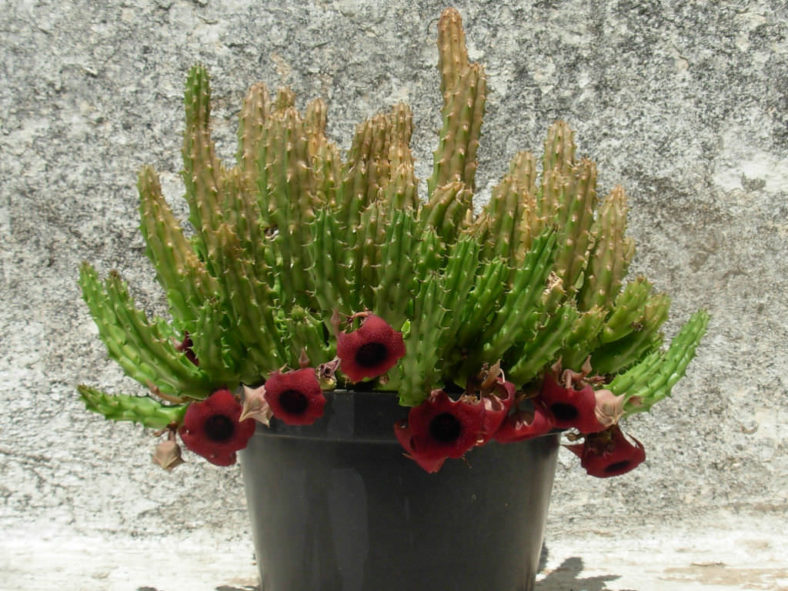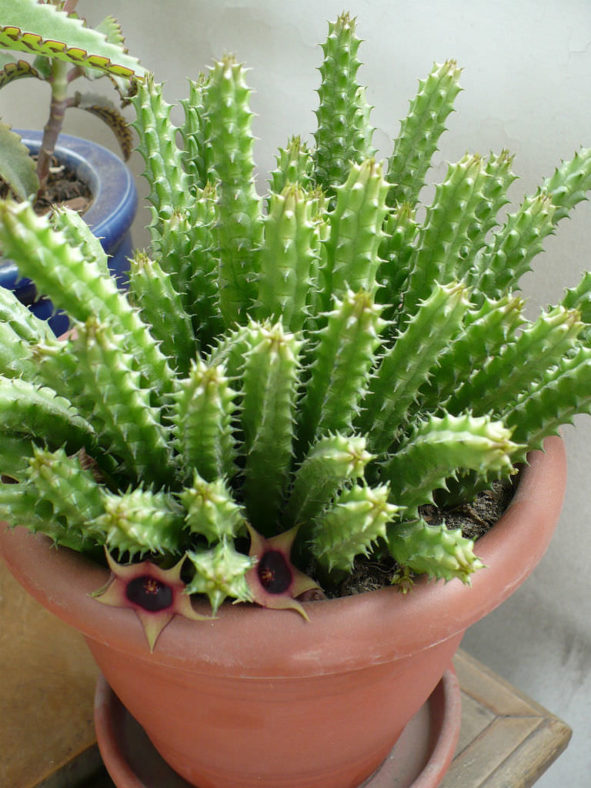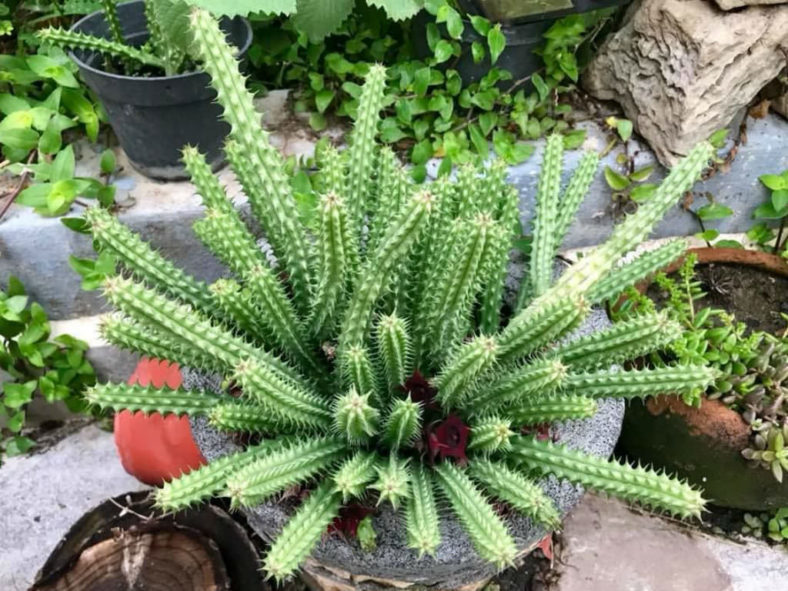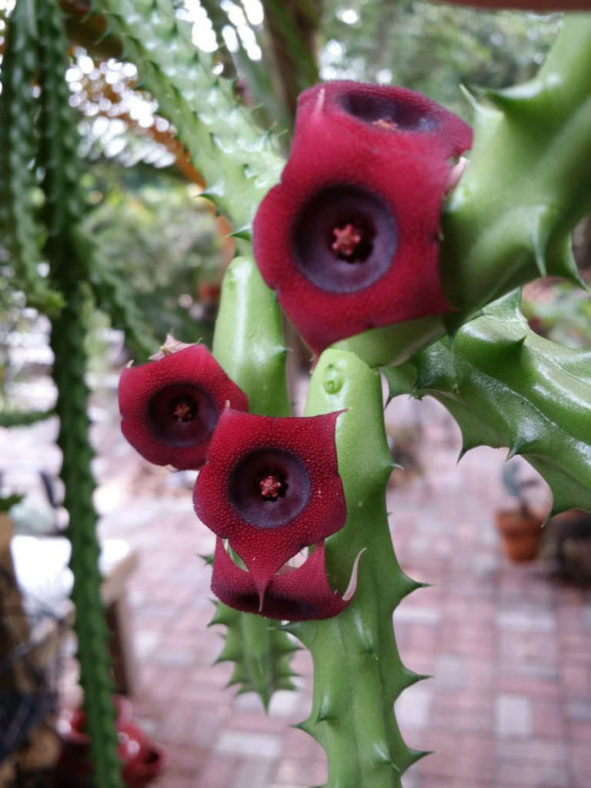Scientific Name
Huernia schneideriana A.Berger
Common Name(s)
Red Dragon, Red Dragon Flower
Synonym(s)
Ceropegia 'Red Dragon Flower'
Scientific Classification
Family: Apocynaceae
Subfamily: Asclepiadoideae
Tribe: Stapeliae
Genus: Huernia
Origin
Huernia schneideriana was once thought to be a natural hybrid of Huernia verekeri and Huernia aspera, but some authorities now recognize it as a legitimate species native to Tanzania.
Description
Huernia schneideriana is an attractive succulent that forms clumps of glaucous-green stems with deltoid tubercles joined into 6 to 7 angles, often spirally twisted along the stem. The stems are erect to prostrate or pendulous and can grow up to 18 inches (45 cm) long and 0.6 inches (1.5 cm) across.
The bell-shaped flowers can reach up to 1.2 inches (3 cm) in diameter and appear near the base of the stems in fall. They are brownish-red on the outside and velvety reddish-black with a deep purple-black center on the inside.

Hardiness
USDA hardiness zone 10b to 11b: from 35 °F (+1.7 °C) to 50 °F (+10 °C).
How to Grow and Care
Huernias require a potting mix with excellent drainage. A succulent plant mix of 50 percent pumice or perlite, 25 percent peat or organic mulch, and 25 percent sand helps prevent rotting and overwatering. Roots experience dieback in cool-season dormancy, so plants grow best in shallow containers, allowing the soil to dry out quickly. Using clay pots further helps the soil from staying too wet. An underlayment of coarse gravel below the soil mix also improves drainage. In climates with damp, cool summers, a layer of gravel between the plant and the soil mix also helps prevent the stems from staying too moist.
Outdoor plantings do well in raised beds. Huernias prefer bright light or partial shade. In nature, they grow underneath shrubs or other plants. Too much sun causes stems to develop protective reddish or purple pigmentation and can actually scald the stems. Too little light leads to weak, thin growth with decreased flower production. Huernias grow best between 50 and 80 °F (10 and 27 °C). Protect them from freezing weather.
See more at How to Grow and Care for Huernia.
Links
- Back to genus Huernia
- Succupedia: Browse succulents by Scientific Name, Common Name, Genus, Family, USDA Hardiness Zone, Origin, or cacti by Genus
Photo Gallery
Click on a photo to see a larger version.


